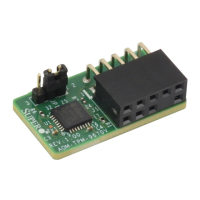Super TPM User's Manual Chapter 1: Introduction
1-3
1.3 Motherboards Supported for TPM
Please refer to the Supermicro website (http://www.supermicro.com/) for a com-
plete and most up-to-date list of the motherboards that can support the TPM. As a
general rule, these are most X9 motherboards, all X10 motherboards, and some
AMD motherboards. Such motherboards will have a specially designated JTPM1
connector, which will be listed in the respective motherboard's manual.
1.4 Intel
®
TXT
The Intel TXT is a software tool that may be used in conjunction with the TPM to
provide additional security for pre-launch rmware of clusters and clouds, including
the BIOS, IPMI, SAS rmware, CMM rmware, and more. It is optional, but the TPM
is required for it to be provisioned. It further increases system security by protecting
rmware against malicious attacks to vulnerable areas.
It works by matching hypervisor measures with encryption keys upon system launch.
If the hypervisor does not match the keys, then the hypervisor will be prevented
from starting up.
To use the TXT, you need to enable TXT support after provisioning the TPM.
Note: TXT is only supported on Intel platforms that support TPM use.
A. How the TXT Works
The Intel TXT, when enabled, follows a step-by-step process to ensure security of
pre-launch components.
1. Measures the hypervisor launch upon system startup
2. Checks for a match
3. If matched: The TXT signals "trusted," and the launch is allowed to proceed.
4. If mismatched: The TXT signals "untrusted," and the launch is blocked.
1.5 An Important Note to the User
The graphics shown in this user's guide were based on the latest information
available at the time of publishing of this guide. The TPM screens shown on your
computer may or may not look exactly like the screen shown in this user's guide.

